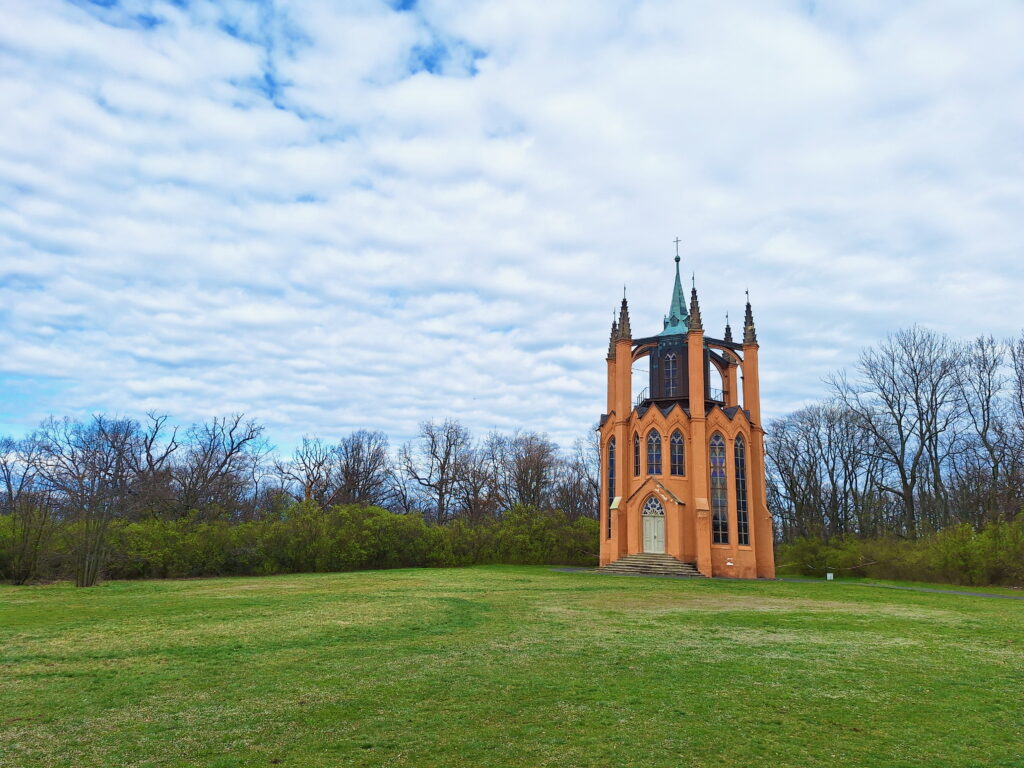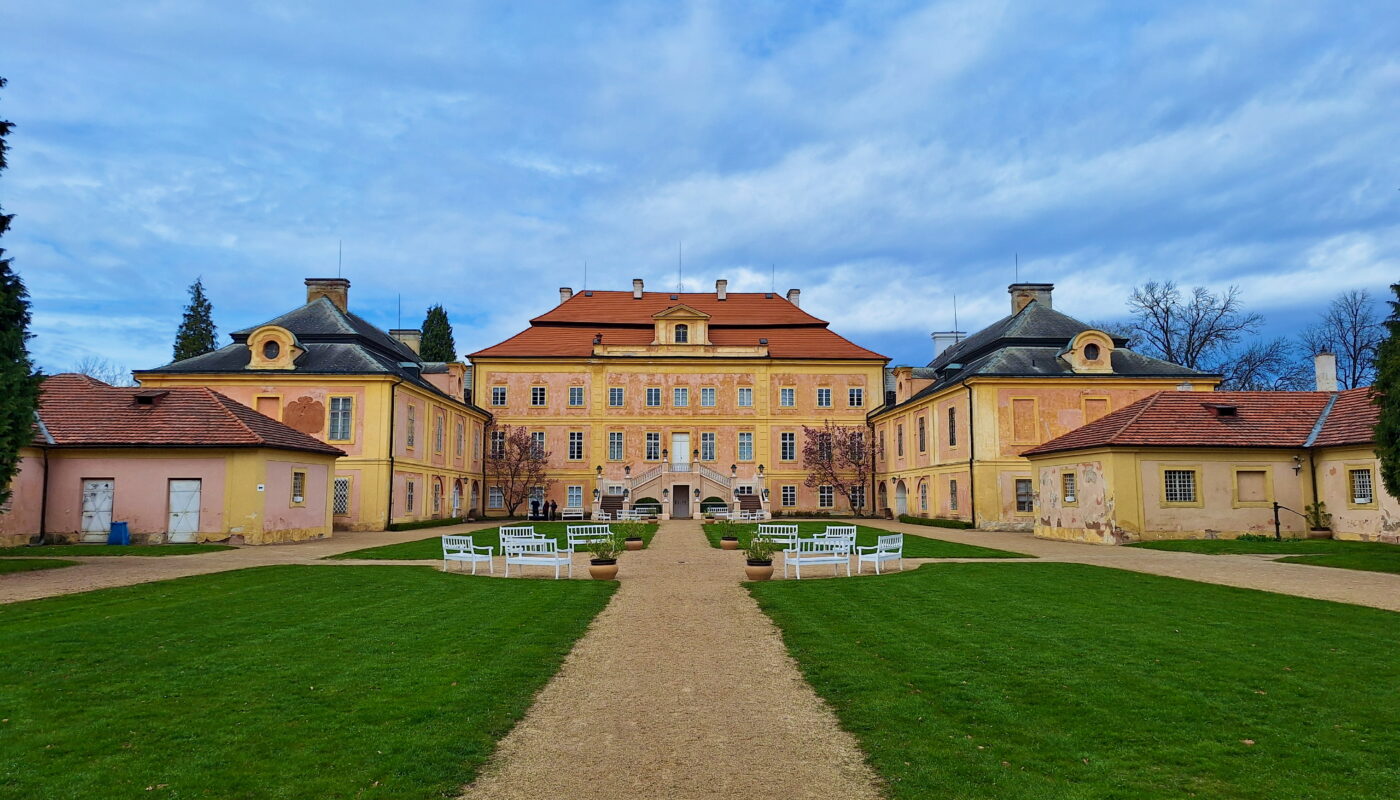Reading Time: 5 Minutes 40 Seconds
Historical context
Krásný Dvůr, which translates to Beautiful Courtyard, is a tiny village close to Podbořany, in Northern Bohemia.
It is mainly known because of its restored Baroque castle and the adjacent park.
The castle we see today comes from reconstructions and extensions of a villa from the 16th century, done by the Černín family between 1720 and 1724.
František Josef Černín was a Czech nobleman, who bought the property at the end of the 17th century, and entrusted the Baroque architect František Maxmilián Kaňka to draw a plan to renovate it.
The castle remained in possession of the Černín family (spelled Czernin, in English) until World War I.
During the German occupation the castle was used by the Nazi authorities, who were later succeeded by the Soviets under the Communist regime.
Subsequently, the Ministry of Agriculture repurposed the castle first as a state farm and then as a school.
In the 1960s, there were proposals to demolish it, but the idea of renovating it for public and tourism use eventually took over.
In 2001 the castle and the park were declared National Cultural Monument, and in 2004 a big renovation started to allow public access.
Tourist information
Some areas of the Krásný Dvůr estate are already restored, including the main castle building, the roof, and the entrance stairs on the north and south side. Some other areas are still being repaired.
The castle can be visited via guided tours during the opening season, which usually goes from April to October.
During the 45-minutes tour you visit 18 rooms decorated with items of the 18th and 19th century.
For all the info related to the price, opening time and latest news, please refer to the official website.
On the spot you find toilets and a cafeteria, which offers drinks and few snacks, and follows the castle opening hours.
Krásný Dvůr castle park
The text above was just an introduction to the much more interesting park, which, by the way, is open and accessible all year round.
The park was founded by the grandson of František Josef Černín, Jan Rudolf Černín.
Between 1783 and 1793, he transformed the fields surrounding the castle into a 100-hectare park, inspired by the fashionable English gardens of the 18th century and influenced by romanticism.
The park was enhanced with various buildings in different architectural styles.
Today, the Krásný Dvůr park is the oldest and largest English park in the Czech Republic.
Exploring Krásný Dvůr’s park
Starting from the castle, you can have a nice walk following the red marked trail.
This is the longest route at 4.5km, which you can shorten in many ways.
At the beginning, you cross a French garden featuring a flowerbed and a bridge over a tiny pond.
Close by you see the torso of a millennial oak known as Goethe’s oak (Goethův dub).
After few hundreds meters you encounter a white, octahedral-shaped bird aviary (voliéra) made of wood, complete with square windows. In summer, coloured birds can be seen flying around it.
Continuing along the trail, you meet a memorial stone from 1906, inscribed with the names of notable visitors, including Emperor Franz Joseph, Emperor Ferdinand I of Austria, and the writer Johann Wolfgang Goethe.
You then cross the Leska stream, see another big oak with a resting bench underneath and reach the temple of Pan (Panův templ).
This is the oldest building of the park, built between 1783 and 1786. It is shaped as a Greek temple, with a triangular tympanum and four Ionic columns.
It is named after Pan, the Greek god of forest, pastures and hunting, and above the entrance there are 3 panels in stucco depicting his life.
In front of the temple there was an artificially created waterfall, which was supposed to enhance the experience of the park visitors.
Today you see just a bunch of dry stones.
Following the path up the hill, you find the Glorieta, a circular shaped building, also known as the “Little Temple” or the “Temple of Venus”.
It was built in 1784, and it has a tin covered dom and 8 Tuscan columns with a Doric beam.
The original idea for this temple was to use it to display a marble bust of Rudolf Černín’s wife.
More discoveries in the park
At the westernmost edge of the park stands a 26m high obelisk, built in 1801.
It is 4-sided, pyramid-shaped, and lined with sandstone columns with chains and stands at the end of the 1km long, and only straight path of the park.
The Latin inscription on the memorial plaque commemorates the victory in the Battle of Amberg in 1796, where the Grand Duke of Austria, Ludwig Johann Josef Lorenz, won over the French army.
Moving forward up the next hill, you see the Dutch Farmhouse, also known as “The Red Hunting Lodge” (Červená hájenka) or “The English House”.
It was used for living, but at the same time it was supposed to give the illusion of a farmstead.
The structure is from 1973, has a rectangular base and it is built with red painted bricks.

From the Dutch Farmhouse you can already see the neo-Gothic temple, the park’s most famous and most spectacular building.
Constructed between 1793 and 1796 on the highest point of the park, at 368m above sea level, served as lookout point.
It later became a memorial to General Karl Schwarzenberg, who defeated Napoleon in Leipzig in 1813. In fact, a statue of him was later placed inside the temple.
Unfortunately, the main structure of the temple is in wood, that has been painted to look like stone. Therefore, the building never lasted long without reconstruction, refurbishing or renovation.
And even today it is not possible to visit it inside, because of ongoing repairing.
The last highlights on your walk
Walking down the hill you find the Chinese Pavilion, an octagonal-shaped structure built between 1788 and 1790 on an artificial cave.
The building was supposed to resemble a Chinese pagoda: it has 4 oval, vertical windows on the sides, and a curved roof in shape of a lantern.
In front of the pavilion there was a pool (today it is just an empty hole), that collected the water from the Leska stream. The water was then released at specific times to create the waterfall in front of the Temple of Pan mentioned earlier.
There is a whole structure in place, with channels and corridors to let the water flow from the pool down to the rocky area of the waterfall, but unfortunately it is not in use anymore.
Moving forward and returning to the starting point, you encounter the Lusthaus (the Summer House), or Goethe’s Pavilion, an octagonal garden pavilion in French classicist style.
It was built between 1784 and 1786, and it is said that Černín used it to host musical events during his summer stays.
How to get to Krásný Dvůr
The best, and probably the only option to reach Krásný Dvůr is the car.
In 1 hour and a half you can cover the 90km that separate Krásný Dvůr from Prague (if you are based in Prague, of course).
Remember to park in the parking area at the back, which is free. The main parking at the front is paid.
If you want to give it a try by travelling by public transport, there is a tiny train station in the village, or you can opt for a bus.
However, if you are not already in the vicinity (i.e. Podbořany, Žatec, Kadaň), it will take you between 2 to 4+ hours to reach the destination.
Some buses leave Prague from Zličín, but the journey involves a couple of transfers and a lengthy travel time.
You can refer to the usual pubtran.cz.
I hope you liked the long reading and the wonderful park!

